Life in Paris: Cultural Lesson on Love from French Cinema

To fully appreciate the French art of love there’s no denying that a French lover would be extremely useful. If this is not possible do not despair as I have an alternative that could prove just as effective and far less exhausting.
My first French husband taught me a great many things about his language, culture, and civilization, for which I shall be eternally grateful. I am most grateful of all for the gorgeous son we have together, who shares his father’s name, musical inclination, inimitable loping gait, and a penchant for contrarianism. For a long time the congenitally congenial skin I was born into found this combativeness quite trying. I have since progressed, for while I remain annoyingly affable I now find a good argument quite stimulating.
This husband taught me, among other things, to appreciate the aesthetic of ze big French nose, made sexy by a pair of Italian wrap-around glasses of exquisite design, the taste of unfiltered cigarettes, funky man shoes, and imperfect teeth. He worked tirelessly to transform my polite schoolgirl French into something worthy of a truck driver, and taught me the proper use of such vital expressions as “à la mords-moi-le-noeud”. I eventually succeeded in maintaining my sang-froid when social excursions required me to dine elbow-to-elbow or partir en week-end with one or more of his ex-mistresses. He taught me how to drive stick shift with aplomb aboard his beautiful red 1967 Volvo that lacked functional seat belts and left its passengers smelling of petrol. I sandwiched that car into the most exiguous parking spaces, defying the law of physics out of sheer will (and the gradual yielding of the other vehicles’ bumpers). I learned to mount and dismount his English motorbike in a short skirt without burning myself on the exhaust pipe, learned at the expense of a significant portion of flesh once belonging to my right calf.
Should your own French lover attempt to engage you in a piquant quarrel about the validity of Jean-Luc Mélenchon’s politics, Sartre’s philosophy, or the architecture of Jean Nouvel, fear not! Think of it as an invitation to a delicious round of what I would call flirtellectualism. A Frenchman, at least the kind I historically tend to favor, as physical as the ultimate objective may be, always begins a good romance with a robust round of mental foreplay. You can even admit that you know absolutely nothing about Jean-Luc Mélenchon’s politics and let him ramble on, sipping your wine politely, until he hits a subject that you’re willing to roll up your sleeves about. Love à la française flourishes through the joyful confrontation of ideas, which does not preclude some spirited head-butting but must invariably include good food and wine. Before dinner you may need to select a few subjects of conversation from a reliable source such as Le Monde, Le Figaro, Libération, or if you’re really good, Le Canard Enchaîné. Le Parisien is a bit risky. The International New York Times will do as well.
My first husband and I also shared a passion for film, which provided ample opportunities for crossfire debate. Throughout the years of our courtship I became a veritable rat de cinémathèque, meaning that I spent inordinate amounts of time, day and night, haunting the sunless confines of dark cinemas, scurrying from one screening to the next. The haven for rats such as myself at the time was the dusty Cinémathèque Française at the Palais de Chaillot (which has since moved to Bercy), the Forum des Images beneath les Halles, and the countless tiny, independent cinemas tucked away in the labyrinthine streets around boulevards St Michel and Saint-Germain—Le Champo, Le Racine, Le Reflet Médecis Logos, St André-des-Arts, Action Christine, Action Rive Gauche, were among my favorites. (See a list of my favorite cinema’s with addresses below.)
Whether you have a French lover or not, for a complete overview of the many variants of love à la française nothing beats a cinematographic journey through the greatest works of French cinema devoted to romance. As well as a cultural lesson they will introduce you to some of French cinema’s greatest actors at their peak. You’ll also become familiar with some French cinema’s classic one-liners you can practice in front of the mirror. Most of all, your cinema marathon will hopefully reinforce your affection for and deepen your appreciation of your adopted country through the works of its uniquely talented writers, directors, and artists.
The practical application of these lessons in love, of course, remains entirely in your own hands….
L’Atalante by Jean Vigo (1934)
This film follows a pair of newlyweds as they embark on their life together aboard a barge called the Atlantis, in the company of a quirky bargeman obsessed with cats and a curious crew boy. By the time the barge hits Paris the young wife is already bored and wanders off into the city, getting into a heap of trouble. Poetic in its simplicity, Vigo’s film evokes both the awkwardness and raw eroticism of young love and a vivid description of working-class life in depression-era France.
Les enfants du Paradis by Marcel Carné (1939)
Children of Paradise (english title) is best suited to a Saint Valentine’s day screening and is regarded by many as one of Carné’s greatest achievement. It recounts the love story of an actress and woman-about-town with the magical name of Garance, her paramour Baptiste, and their struggle against the negative forces determined to drive them apart. French poet Jacques Prévert wrote the dialogue in most of Carné’s films and his lyrical language is something to experience firsthand.
Special mention for another of Carné’s films based on another Prévert screenplay, Le quai des brumes, which also contains a romantic scene made legendary through the onscreen chemistry of its leading actors Jean Gabin and Michèle Morgan. If you’ve ever heard anyone say, “T’as de beaux yeux, tu sais?” know that Jean Gabin said it first and best.
La règle du jeu by Jean Renoir (1943)
A masterpiece, this elegant film wryly portrays the “rules of the game” governing French society on the precipice of World War 2. It is a fascinatingly prescient examination of a system on the verge of breakdown. Despite its darkly dramatic nature Renoir’s film still manages to capture the playfulness that makes us all want to fall in love, the excitement of the pursuit, the slipperiness of love once it has been secured, and the despair of unrequited love. One of the film’s main characters, the wealthy marquis Robert de la Chesnaye, tells his lover that “love is nothing but the exchange of two fantasies and two épidermes”.
Another like this is Renoir’s achingly beautiful film La grande illusion (1937). Although it is not a romance it is nevertheless a love story, and an excellent complement to La régle du jeu.
Les Quatre Cents Coups (1959), Baisers Volés (1968), Domicile Conjugale (1970), L’Amour en fuite (1978) by François Truffaut
In these films François Truffaut recounts the life and loves of his alter ego Antoine Doinel played by Jean-Pierre Léaud. Although it is not so much a love story, you nevertheless have to start with Les Quatre Cents Coups to understand the force driving both Truffaut the artist and the film’s main character. The three subsequent films follow Antoine Doinel through romance, love, marriage, parenthood, and divorce, followed by still more love as Paris emerges from the stark period after World War 2 and gradually regains its color and vibrancy both on and off-screen through the 60s and 70s. The playful banter between the men and women and their evolving relationships is both moving, insightful, and simply delightful.
A bout de souffle (1960) by Jean-Luc Godard
Although François Truffaut and Jean-Luc Godard are considered beacons of La Nouvelle Vague their cinematographic style and explorations of love differ significantly. Godard’s films shows a less tender side to male-female relationships and one that is troubled by the shifting, ego-driven desires of its characters. He explores the fatal disconnect that often brings love affairs to an abrupt, often violent, end. But boy oh boy, is it worth it! Any self-respecting americaine woman living in Paris needs to see A bout de souffle (Breathless) if only to recognize that little piece of herself embodied by Jean Seberg’s character Patricia Franchini, a beautiful young American in Paris whose romantic ties to a rakish, small-time thug played by Jean-Paul Belmondo will take her on a very bad trip ending in the rue Campagne-Première in the 14ème arrondissement. Innocent victim? Conniving jezebel? Better or worse than her sociopathic murderous lover? Perhaps by the end, you’ll be able to answer the question, “Qu’est-ce que c’est dégueulasse?”
Le Mépris (1963) by Jean-Luc Godard
Different couple, different trouble. If the sumptuous decors of Le Mépris (Contempt) shot on location on the island of Capri are not enough to enthrall you, Brigitte Bardot’s stunningly sensual beauty will. Bardot is at her peak in this film, and in one of the film’s most famous scenes you’ll witness a body scan unlike any you’ll encounter in yoga class, “Et mes fesses, tu les aimes?” “Oui…” Her husband played by Michel Piccoli confirms that he does. But then contempt sets in and catastrophe follows.
Lola (1961) by Jacques Demy
Lola is about as romantic as it gets. Furthermore, it’s just so quintessentially French! The statuesque brunette Anouk Aimée is about as far from the Hollywood blonde bombshell as you can get. She plays Cécile, a cabaret dancer earning a living (under the stage name of Lola) in the provincial city of Nantes. She supports herself and her little boy, born of a love affair with Michel who abandoned her. Despite a slew of suitors, Lola remains devoted to Michel, her one true love, convinced that he will one day return to her. Is she deluded? Watch and see.
Les parapluies de Cherbourg (1964) by Jacques Demy
Filmed in color and told through song, The Umbrellas of Cherbourg (english title) is a bittersweet tale of young love and twists of fate that alter our dreams. Catherine Deneuve and Nino Castelnuovo are simply breathtaking to behold, they are so young and outrageously beautiful! It won the Cannes film festival’s highest prize La Palme d’Or and was followed by an equally famous musical comedy, Les Demoiselles de Rochefort (1967) in which Deneuve starred alongside her sister Françoise Dorléac, who died tragically the year the film was released. The film also features American musical comedy star Gene Kelly.
The films of Eric Rohmer
The films of Eric Rohmer are delightfully intelligent explorations of love. Start off with the perky Pauline à la Plage (1982) to see the young Arielle Dombasle long before she became Bernard Henri Levy’s better half. Honestly, I love all his films but wholly recommend My Night at Maude’s, Claire’s Knee, Love in the Afternoon, Full Moon in Paris, The Green Ray, and more recently his Tales of the Four Seasons. Rohmer was extremely prolific, and the film company he founded in 1962 at the height of the Nouvelle Vague with fellow filmmaker Barbet Schoeder, Les films du Losange, still exists today. Rohmer’s delicate, refined, sensitive observations offer the dedicated Francophile a phenomenal opportunity to explore French attitudes toward love and the language that accompanies it.
That’s it for the classics. I’ll follow up in another post with a list of alternative and somewhat more jarring visions of love à la française, starting with Serge Gainsbourg’s film Je t’aime, moi non plus (I Love You, I Don’t) (1976) – When I saw this film it was the only time I’ve ever been asked for an ID at the cinema to ensure I was of age. The film evokes the awkward and irreconcilable love between a homosexual man and an androgynous albeit heterosexual woman, setting the stage for significantly more realistic explorations of homosexual love to come, the biggest of all being La Vie d’Adèle, translated as “Blue is the Warmest Color”, Abdellatif Kechiche’s powerful love story that blew the socks of the Cannes Film Festival’s prestigious jury in 2013 who headed by Stephen Spielberg, unanimously awarded the film its most prestigious award the Palme d’Or.
An abbreviated list of my favorite cinemas in Paris:
Cinémathèque Française
51 Rue de Bercy, 75012 Paris
The Forum des Images
2 Rue du Cinéma, 75001 Paris
Le Champo
51 Rue des Écoles, 75005 Paris
Cinéma Le Nouvel Odéon (formerly Le Racine)
6 Rue de l’École de Médecine, 75006 Paris
Le Reflet Médecis Logos
3 Rue Champollion, 75005 Paris
St André-des-Arts
30 Rue Saint-André des Arts, 75006 Paris
Action Christine
4 Rue Christine, 75006 Paris
Le Grand Action
5 rue des Écoles, 75005 Paris

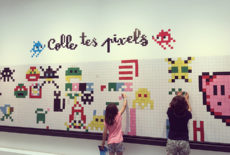
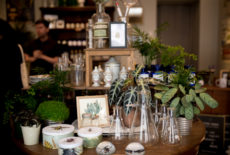
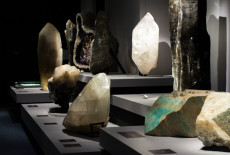
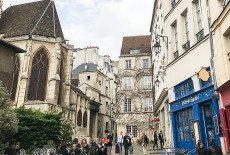

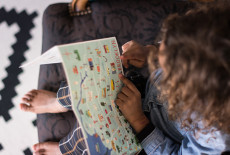







Pingback: Saturday Morning Manna - Manna Paris